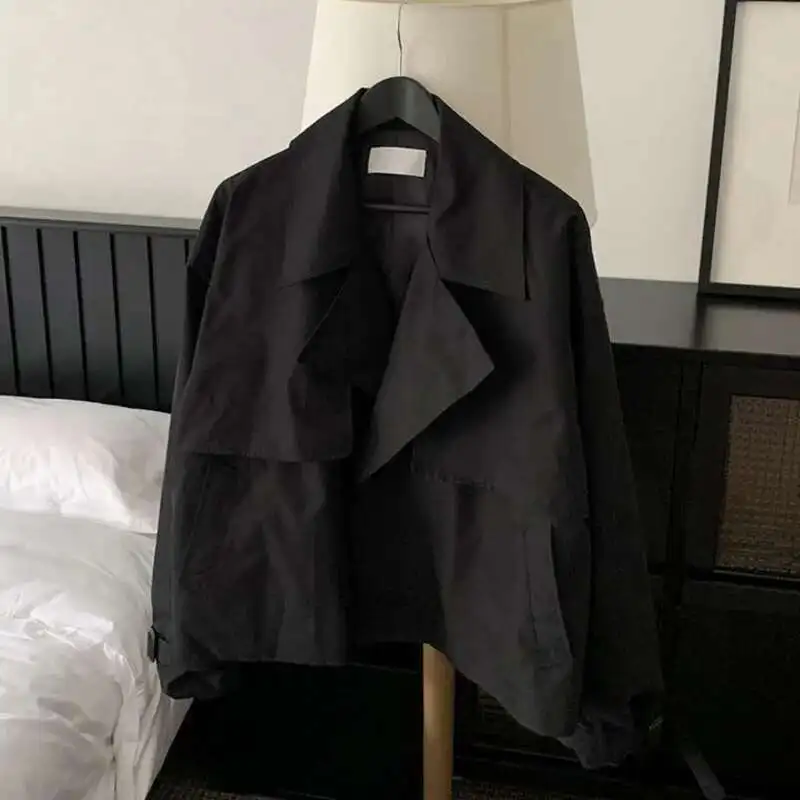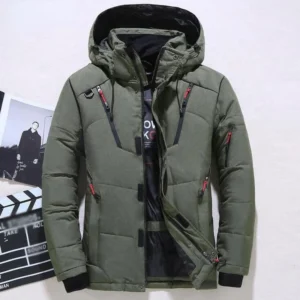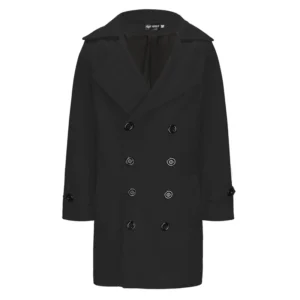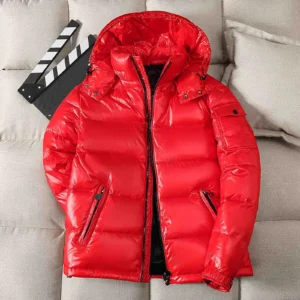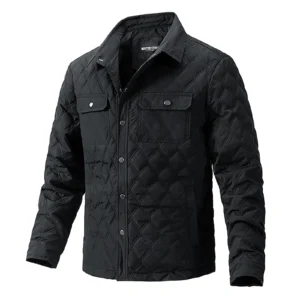Navigating the unpredictable nature of mild weather can make dressing appropriately a daily challenge. When temperatures hover between cool and comfortable, finding the perfect outer layer becomes essential. This is where lightweight coats shine – offering that ideal balance of warmth without overheating, protection without bulk, and style without sacrifice.
A truly effective lightweight coat for mild weather provides the perfect middle ground: enough insulation to ward off morning chills, breathable construction for afternoon warmth, and versatile design for changing conditions. Whether you’re dealing with spring showers, autumn breezes, or those in-between days where the weather seems to change hourly, the right lightweight coat becomes your most valuable wardrobe asset.
In this comprehensive guide, we’ll explore everything from classic trench coats to modern technical shells, breaking down the essential styles that excel in mild temperatures. You’ll discover how to select the perfect coat based on your lifestyle, learn about the technical features that matter most, and find recommendations that combine performance with style. Understanding the nuances of choosing right coat length can dramatically improve both comfort and appearance as you navigate mild weather conditions.
What Makes an Ideal Lightweight Coat for Mild Weather?
The perfect lightweight coat for mild weather walks a fine line between protection and comfort. Unlike heavy winter outerwear or ultra-light summer layers, these transitional pieces must perform across a range of conditions typically found in temperatures between 45-65°F (7-18°C). This versatility is what makes finding the right coat both challenging and rewarding.
Several key features define quality lightweight coats:
Breathability – Quality lightweight coats allow moisture vapor to escape, preventing that clammy, overheated feeling when temperatures rise or during increased activity. Look for fabrics that offer at least moderate breathability ratings (10,000+ g/m²/24hrs for technical fabrics).
Water Resistance – While not necessarily fully waterproof, the best mild weather coats offer some degree of water resistance. This might come in the form of water-repellent treatments that cause light rain to bead up and roll off rather than soak through.
Weight & Packability – True lightweight coats typically weigh between 12-24 ounces (340-680g), making them easy to carry when not needed. Many modern designs can compress into their own pockets or stuff sacks for convenient storage.
Appropriate Insulation – The ideal amount of insulation creates a microclimate around your body without causing overheating. This often means minimal synthetic fill, lightweight down, or simply smart fabric choices that trap just enough warmth.
Layering Capability – Versatile lightweight coats work equally well over a t-shirt on milder days or layered over sweaters when temperatures drop. This adaptability makes them particularly valuable for unpredictable seasons.
Wind Protection – Even mild temperatures can feel cold with wind chill. Effective lightweight coats provide a barrier against breezes without the bulk of winter outerwear.
The most important quality in these transitional pieces is their versatility. A well-designed lightweight coat serves as both your primary outerwear in mild conditions and a layering piece when the weather turns. Finding the right balance for your perfect coat length for every body type enhances both function and style, making these coats essential investments for any thoughtful wardrobe. Metro Cloak’s mens topcoats collection exemplifies this versatile approach with designs that transition seamlessly between seasons.
8 Essential Lightweight Coat Styles for Mild Weather
When navigating mild weather, having the right coat can make all the difference between comfort and frustration. The following eight coat styles represent the best options for those in-between temperatures, each offering unique benefits for different situations and personal preferences. We’ve selected these styles based on their versatility, quality construction potential, and timeless appeal that transcends seasonal trends. Each category excels in specific scenarios while maintaining the crucial balance between protection and breathability that defines great light mens topcoats for effortless layering.
1. The Classic Trench Coat: Timeless Weather Protection
The trench coat stands as perhaps the most iconic lightweight weather protection ever designed. Originally created for military use in the early 20th century, this versatile garment has evolved from battlefield gear to boardroom staple while maintaining its functional heritage.
Modern trench coats typically feature water-resistant cotton gabardine or contemporary technical blends that maintain the classic aesthetic with enhanced performance. The genius of the design lies in its thoughtful details: epaulets that shed water from the shoulders, a storm flap that prevents wind penetration, and an adjustable belt that creates a tailored silhouette while allowing for layers underneath.
Key Features:
* Double-breasted front for additional wind protection
* Removable liner for temperature adaptability
* Raglan sleeves for freedom of movement
* Length that protects from rain while maintaining mobility
* Collar that can be turned up against unexpected showers
Pros:
* Exceptional versatility from business formal to casual settings
* Classic design that never goes out of style
* Moderate water resistance for light rain protection
* Generous cut allows for layering in cooler conditions
Cons:
* Can feel slightly formal for very casual settings
* Traditional designs may be bulkier than modern technical options
The trench coat excels as a sophisticated option for unpredictable conditions, particularly for those who need to maintain a polished appearance while navigating changing weather. Metro Cloak’s mens dress coat collection includes several trench variations that balance heritage design with modern performance.
2. Lightweight Down and Puffer Jackets: Warmth Without Bulk
Modern lightweight down and puffer jackets represent one of the most remarkable innovations in outerwear technology. Unlike their bulky predecessors, today’s ultra-light insulated jackets offer impressive warmth with minimal weight and volume, making them perfect for mild weather layering and variable conditions.
The magic lies in the insulation. Premium options utilize high fill-power down (600-800+) that provides exceptional warmth relative to weight, while synthetic alternatives offer similar performance with better wet-weather reliability. Advanced shell fabrics enhance these jackets with improved wind resistance, water repellency, and breathability without adding bulk.
Key Features:
* Ultra-lightweight construction (many weigh just 8-10 ounces/230-280g)
* Packable designs that compress into included stuff sacks or their own pockets
* Slim profiles that work equally well as mid-layers or standalone pieces
* DWR (Durable Water Repellent) treatments for light weather protection
* Minimalist design elements that maximize function while reducing weight
Pros:
* Exceptional warmth-to-weight ratio
* Highly compressible for easy packing and travel
* Works well in layering systems for temperature regulation
* Modern designs offer clean, streamlined aesthetics
Cons:
* Limited protection in sustained rain
* Ultra-light fabrics require careful handling to prevent tears
These lightweight marvels have become essential components in the modern wardrobe, offering remarkable temperature regulation in a form that can be easily carried when not needed. The best options in Metro Cloak’s mens quilted coat collection deliver performance without sacrificing style.
3. Technical Rain Shells and Windbreakers: Weather Protection On-Demand
When unpredictable weather demands adaptable protection, technical rain shells and windbreakers offer the perfect solution. These lightweight garments provide targeted defense against specific elements without unnecessary bulk or insulation, making them ideal companions for mild conditions.
The distinction between these two categories matters: windbreakers primarily block air movement with minimal water resistance, while rain shells prioritize waterproofing with wind protection as a secondary benefit. Both excel in their specialized roles while remaining light enough to carry anywhere.
Key Features:
* Waterproof ratings for rain shells (typically 5,000-20,000mm water column for mild weather use)
* Breathability ratings that indicate moisture vapor transmission (10,000-20,000g/m²/24hrs)
* Adjustable hoods with brims for face protection
* Strategic venting systems (pit zips, mesh-backed pockets)
* Packable designs that compress into their own pockets
* Sealed or taped seams on rain shells to prevent leakage at stitch points
Pros:
* Exceptional weather protection relative to weight
* Highly packable emergency protection
* Works well over base and mid layers in a layering system
* Quick-drying properties
Cons:
* Limited insulation requires appropriate layering in cooler conditions
* Technical appearance may not suit more formal settings
These technical pieces excel as practical solutions for changing conditions, especially when activity levels or temperatures fluctuate throughout the day. Their specialized designs prioritize function while modern iterations increasingly incorporate thoughtful style elements.
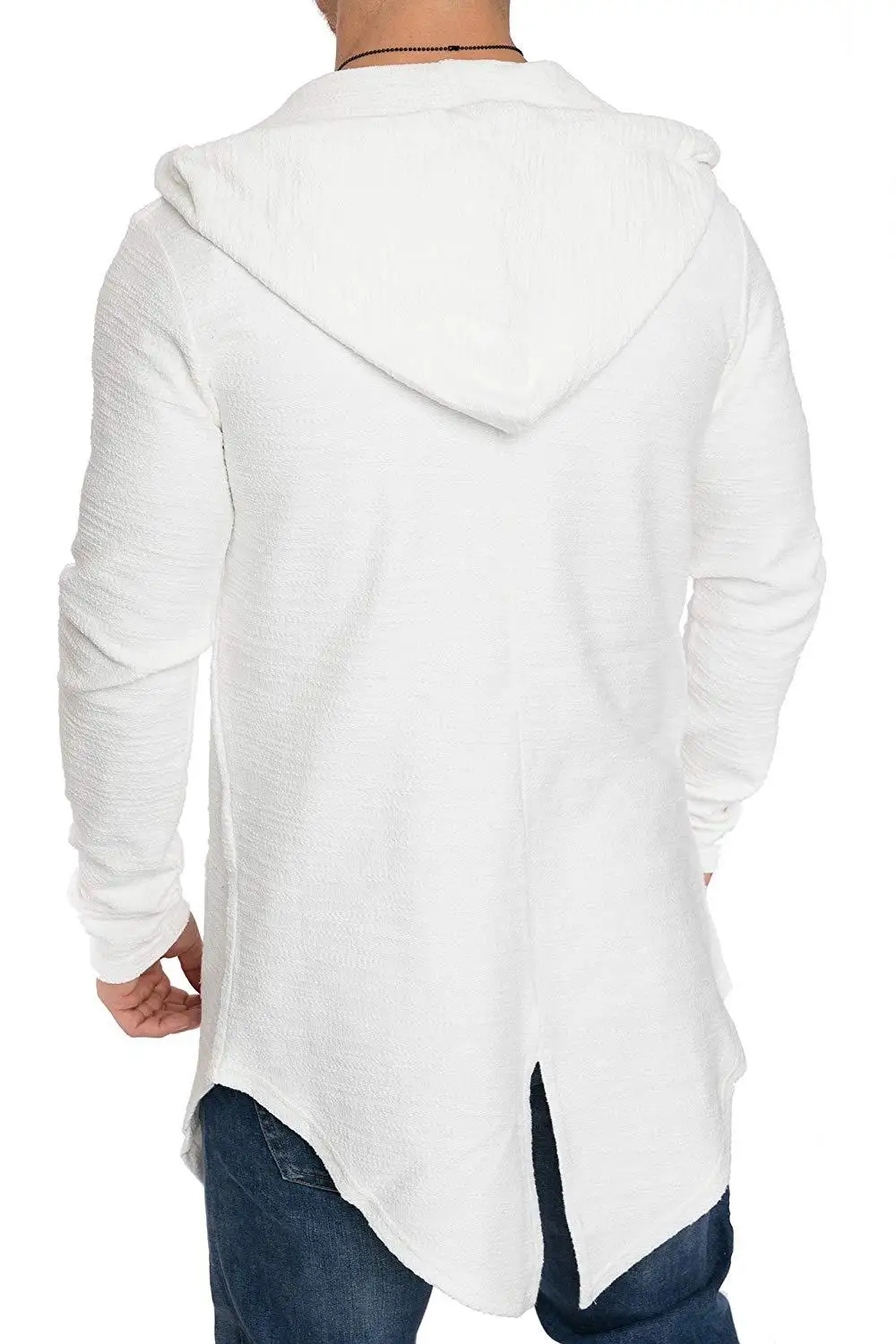
4. Softshell Jackets: The Active Lifestyle Choice
The softshell jacket category emerged as a response to the limitations of traditional outerwear for active pursuits. These versatile garments bridge the gap between weather protection and comfort during movement, making them ideal for mild conditions where activity levels fluctuate.
What sets softshells apart is their remarkable stretch and breathability combined with moderate weather resistance. The typical construction features woven fabrics with mechanical stretch, often with a brushed interior for comfort and minimal insulation. This combination creates a microclimate that regulates temperature during variable exertion levels.
Key Features:
* 4-way stretch fabrics that move with the body
* DWR treatments that shed light precipitation
* Breathability that prevents overheating during activity
* Abrasion-resistant outer surfaces for durability
* Athletic cuts that allow full range of motion
* Strategic pocket placement for accessibility during activity
Pros:
* Superior comfort during movement
* Excellent breathability prevents overheating
* More durable than ultralight rain shells
* Versatile across multiple activities and conditions
Cons:
* Less protection in heavy precipitation than dedicated rain gear
* Casual technical appearance may not suit formal settings
Softshells excel as daily drivers for active individuals who need protection from light elements without sacrificing mobility or comfort. Understanding the importance of mens coat length guide principles is particularly relevant for softshells, as length significantly impacts both function and appearance during movement.
5. Quilted Jackets: Refined Style with Light Insulation
Quilted jackets represent the perfect marriage of traditional style and practical function for mild weather. Originating from country and equestrian contexts, these distinctive garments have evolved into versatile pieces that work across multiple settings while providing just enough warmth for transitional temperatures.
The defining characteristic—quilted stitching—serves both aesthetic and functional purposes. Different patterns (diamond, square, channel, etc.) create distinctive looks while also securing the light insulation in place. This construction prevents cold spots and maintains consistent warmth without bulk.
Key Features:
* Lightweight insulation (typically synthetic or down) secured by decorative stitching
* Water-resistant outer fabrics ranging from traditional waxed cotton to modern technical materials
* Tailored cuts that flatter while allowing space for light layering
* Distinctive collar styles (stand, corduroy-lined, etc.) that enhance both function and appearance
* Streamlined profiles that work in both casual and business casual settings
Pros:
* Timeless aesthetic that balances tradition and contemporary style
* Just enough warmth for mild conditions without overheating
* Versatility across multiple dress codes from country to city
* Generally more water-resistant than unquilted alternatives
Cons:
* Limited protection in sustained cold or heavy precipitation
* Traditional designs may have less technical performance than modern alternatives
Quilted jackets shine as sophisticated options for those who need practical mild-weather protection while maintaining a refined appearance. Metro Cloak’s top mens topcoats for transitional weather include several quilted options that exemplify this balance.
6. Modern Denim Jackets: The Casual Classic Reimagined
The humble denim jacket has evolved far beyond its workwear origins to become one of the most versatile lightweight options for mild weather. Today’s versions range from heritage reproductions to technical innovations that maintain the iconic silhouette while enhancing comfort and performance.
Modern interpretations elevate this classic through thoughtful updates. Stretch denim blends improve mobility and comfort, varied weights offer options for different temperature ranges, and contemporary cuts create more flattering silhouettes. Some versions incorporate technical elements like water-resistant treatments or added insulation for enhanced performance.
Key Features:
* Denim weights ranging from lightweight (10oz) for warmer conditions to midweight (14oz) for cooler days
* Stretch components that enhance comfort during movement
* Traditional details reimagined (button closures, chest pockets, waist adjusters)
* Modern fits that flatter while allowing room for layers
* Washing variations that create distinct aesthetics from raw indigo to vintage fades
Pros:
* Exceptional versatility across casual contexts
* Improves with age as denim develops personal wear patterns
* Durable construction that stands up to daily use
* Classic style that resists trend cycles
Cons:
* Limited weather protection in rain
* Primarily suited for casual rather than formal settings
The denim jacket excels as a daily driver for mild conditions, particularly for those with casual dress codes. Its ability to layer over t-shirts or under overcoats makes it especially valuable during transitional seasons with variable temperatures.
7. Bomber and Flight Jackets: Urban Edge Meets Functionality
Bomber and flight jackets have completed a remarkable journey from military necessity to fashion staple while maintaining their functional heritage. These distinctive silhouettes offer the perfect balance of weather protection, distinctive style, and practical features for mild conditions.
The defining characteristics—ribbed collars, cuffs, and waistbands—serve the practical purpose of sealing out drafts while creating the jacket’s instantly recognizable profile. Modern versions range from lightweight nylon shells to more substantial leather or suede constructions, each offering different levels of protection and seasonal appropriateness.
Key Features:
* Ribbed trim elements that seal out wind and create the distinctive silhouette
* Front zip closure for easy on/off and adjustable ventilation
* Practical pocket configurations from the original military designs
* Cut that allows freedom of movement with room for light layers
* Materials ranging from technical nylon to refined leather
Pros:
* Distinctive style with heritage appeal
* Effective wind resistance from the ribbed design elements
* Versatile across casual and smart casual contexts
* Range of weight options for different conditions
Cons:
* Limited protection in heavy precipitation
* May be too casual for formal business settings
These iconic jackets excel as characterful options that combine practical performance with distinctive style. Their ability to bridge workwear, military, and fashion influences makes them particularly versatile across different personal styles.
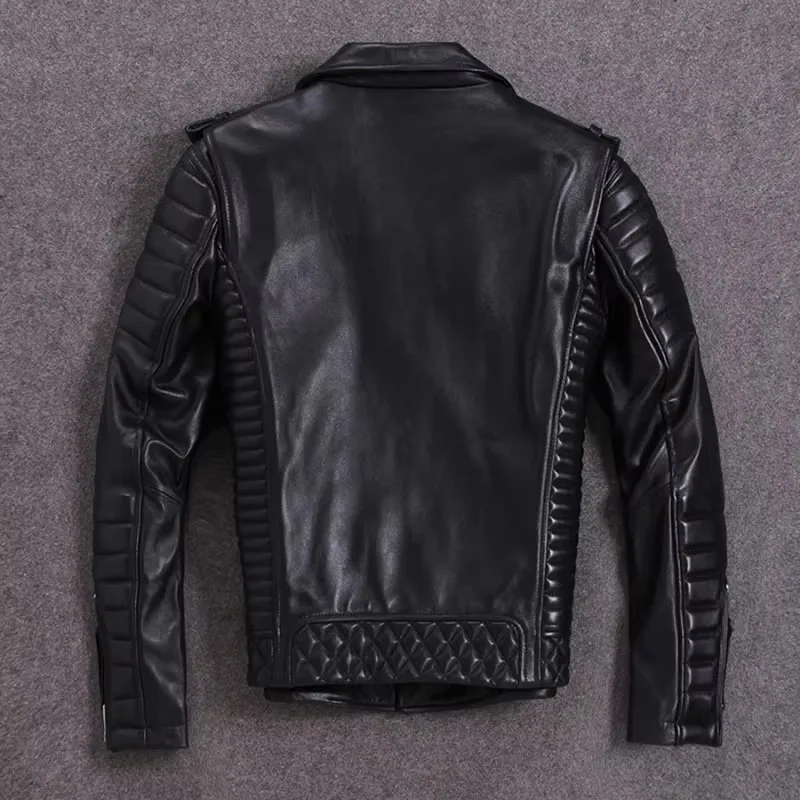
8. Performance Anoraks and Pullovers: Technical Meets Trendy
The anorak and technical pullover category represents the perfect synthesis of heritage design and modern performance. These distinctive pullover styles have experienced a remarkable renaissance in recent years, offering unique functional advantages for mild weather protection.
The hallmark pullover design—typically featuring a quarter or half-zip front rather than full opening—originated as practical weather protection for cold environments. Modern interpretations maintain this protective quality while incorporating technical fabrics and contemporary styling. The result is weather protection with distinctive character.
Key Features:
* Protective high collars and adjustable hoods
* Front zip extends for ventilation control
* Kangaroo pockets or chest pockets for essential storage
* Lightweight technical fabrics with stretch for comfort
* Packable designs for travel and variable conditions
* DWR treatments for light weather protection
Pros:
* Distinctive style that stands out from common jacket designs
* Excellent wind protection, particularly around the neck and torso
* Often more packable than full-zip alternatives
* Trendy aesthetic combined with genuine performance
Cons:
* Pullover design can be less convenient for temperature regulation
* May feel restrictive to those who prefer full-zip options
These distinctive pieces excel as characterful options for those who value both performance and distinctive style. Their unique designs create visual interest while delivering practical benefits for changing conditions. Metro Cloak’s mens hooded winter coat collection includes lightweight options that work perfectly for milder conditions.
Our Top Recommendations: Lightweight Coats That Excel in Mild Weather
After evaluating dozens of coat styles across various categories, we’ve identified standout performers that deliver exceptional quality, versatility, and value. Our selection process considered material quality, construction standards, adaptability across different conditions, and design that balances current style with longevity. While each of the following recommendations excels in its specific category, all meet our fundamental criteria for outstanding mild weather performance.
Best Overall Lightweight Coat for Mild Weather
Our top overall pick delivers remarkable versatility across the widest range of mild weather conditions. This exceptional coat combines intelligent design with premium materials to create a piece that works equally well over business attire or casual weekend wear.
The outer shell features a tightly woven fabric with natural water resistance enhanced by an environmentally friendly DWR treatment. This construction creates effective protection against light rain and wind while maintaining breathability that prevents overheating as temperatures or activity levels rise.
Key Features:
* Versatile mid-thigh length suitable for various heights and body types
* Water-resistant yet breathable outer shell (10,000mm waterproof rating)
* Lightweight construction (approximately 18oz/510g)
* Thoughtful details including waterproof zippers and adjustable cuffs
* Clean design that transitions seamlessly between casual and formal settings
* Temperature rating appropriate for 45-65°F (7-18°C) conditions
Pros:
* Exceptional versatility across different contexts and conditions
* Practical features that enhance real-world usability
* Refined appearance that elevates any outfit
* Thoughtful construction details that improve comfort and function
Cons:
* Premium materials command a higher price point
* Not suitable for extreme weather conditions
This coat represents the ideal balance between protection, comfort, and style—making it the perfect companion for unpredictable mild weather. Understanding short vs long coats guide principles helps appreciate why this particular length works so well across different body types and usage scenarios.
Most Versatile Lightweight Coat
Our versatility champion excels through its remarkable adaptability to changing conditions and contexts. This innovative design incorporates features that allow it to transform as your needs change throughout the day or season.
The secret to this coat’s adaptability lies in its thoughtful modularity. Removable elements allow for customization based on conditions, while a design that looks appropriate across multiple dress codes ensures you’re never over or underdressed. The result is a single piece that effectively replaces several specialized garments.
Key Features:
* Adjustable features including removable hood and adjustable hem length
* Three-layer construction that balances weather protection and breathability
* Strategic venting options for temperature regulation
* Lightweight design (approximately 16oz/450g) that doesn’t sacrifice protection
* Clean aesthetic that works across casual and business casual contexts
* Can be effectively worn in temperatures from 40-70°F (4-21°C) with appropriate layering
Pros:
* Superior adaptability across changing conditions
* Practical features that enhance everyday usability
* Excellent weight-to-performance ratio
* Thoughtful design elements that improve functionality
Cons:
* Modular design includes more components that could potentially fail
* Versatility comes with some compromise in specialized performance
This coat represents the perfect solution for those who need maximum adaptability from a single garment, especially for travel or variable urban environments where conditions and contexts change frequently throughout the day.

Best Premium Lightweight Coat
For those seeking the ultimate expression of quality and refinement, our premium selection delivers exceptional performance through superior materials and construction. This investment piece demonstrates how thoughtful design and uncompromising quality create a coat that performs at the highest level while promising years of service.
The difference becomes apparent in the details—fabric developed specifically for optimal performance in mild conditions, construction techniques that enhance both function and appearance, and thoughtful features that anticipate real-world needs. The result is outerwear that feels like it was custom-made for your lifestyle.
Key Features:
* Premium natural and technical fabrics with superior hand feel and performance
* Hand-finished details that enhance both appearance and function
* Refined construction techniques including fully taped seams
* Sophisticated design that creates a distinctive silhouette
* Thoughtful interior details including microsuede-lined pockets and collar
* Perfect weight (approximately 22oz/625g) for transitional seasons
Pros:
* Exceptional material quality and construction standards
* Superior comfort through thoughtful design and execution
* Distinctive appearance that stands apart from mass-market alternatives
* Durability that ensures years of service
Cons:
* Premium quality commands a significant price premium
* May require more careful maintenance than less refined alternatives
This coat represents the perfect choice for those who value exceptional quality and are willing to invest in superior performance and appearance. Metro Cloak’s mens wool blend coat collection includes several premium options that exemplify this commitment to quality.
Best Value Lightweight Coat
Our value selection proves that excellent mild weather performance doesn’t require a premium price tag. This thoughtfully designed coat delivers the essential features and quality construction needed for reliable performance while maintaining an accessible price point.
What makes this coat remarkable is its focus on the fundamentals—quality materials in the places that matter most, construction techniques that ensure durability, and a design that maximizes versatility without unnecessary complications. The result is a piece that performs well above its price class.
Key Features:
* Durable water-resistant outer shell
* Practical feature set focused on everyday usability
* Lightweight design (approximately 17oz/480g) suitable for mild conditions
* Clean aesthetic that works across multiple contexts
* Thoughtful construction that ensures durability at stress points
* Appropriate for temperatures between 45-65°F (7-18°C)
Pros:
* Excellent quality-to-price ratio
* Focus on practical features that enhance daily use
* Versatile design that works across multiple contexts
* Durable construction that ensures good service life
Cons:
* Fewer premium details than higher-priced alternatives
* More basic fabric technology compared to premium options
This coat represents the perfect choice for practical individuals who need reliable performance without excessive investment. It proves that thoughtful design and focused execution can create excellent mild weather protection at an accessible price point.
Mens Big and Tall Winter Coats, Mens Down Coat, Mens Hooded Winter Coat, Mens Puffer Coat
Price range: $126.44 through $217.01 Select options This product has multiple variants. The options may be chosen on the product pageMens Big and Tall Winter Coats, Mens Hooded Winter Coat
Price range: $80.32 through $106.68 Select options This product has multiple variants. The options may be chosen on the product pageMens Double Breasted Pea Coat, Mens Wool Blend Coat, Mens Wool Pea Coat
Price range: $136.84 through $157.36 Select options This product has multiple variants. The options may be chosen on the product pageMens Cashmere Overcoat, Mens Hooded Winter Coat, Mens Wool Blend Coat
Price range: $128.72 through $139.68 Select options This product has multiple variants. The options may be chosen on the product pageMens Hooded Winter Coat, Mens Insulated Coat, Mens Puffer Coat, Mens Quilted Coat
Price range: $139.88 through $177.72 Select options This product has multiple variants. The options may be chosen on the product pageMens Double Breasted Pea Coat, Mens Hooded Winter Coat, Mens Quilted Coat
Price range: $81.00 through $108.48 Select options This product has multiple variants. The options may be chosen on the product page
How to Choose the Perfect Lightweight Coat: Essential Considerations
Finding your ideal lightweight coat requires matching the right features to your specific needs and preferences. By considering a few key factors, you can narrow the field to options that will serve you best through changing conditions.
Assess Your Lifestyle and Activities
The perfect coat for urban commuting differs significantly from ideal options for weekend hikes or travel. Consider your typical daily activities:
* Urban professionals may prioritize refined appearance and protection from brief outdoor exposure
* Active individuals need freedom of movement and adaptability to changing exertion levels
* Frequent travelers benefit from packability and versatility across different settings
Evaluate Your Local Climate Patterns
“Mild weather” varies significantly by region. Consider your specific conditions:
* Rainy climates demand enhanced water resistance
* Windy areas benefit from sealed closures and adjustable features
* Regions with significant temperature swings throughout the day require adaptable layering options
Consider Your Personal Style
The best coat integrates seamlessly with your existing wardrobe:
* Traditional dressers may prefer classic trench or overcoat styles
* Those with casual wardrobes might lean toward technical or sporty options
* Style-conscious individuals might prioritize current silhouettes and details
Material Selection Makes a Difference
Different materials offer distinct benefits:
* Natural fibers like cotton and wool offer comfort and breathability with classic appeal
* Technical synthetics provide enhanced weather protection and often reduce weight
* Blended fabrics can deliver the benefits of both with fewer compromises
Fit Considerations
The right fit enhances both comfort and performance:
* Allow enough room for light layering underneath
* Consider sleeve length that covers wrists even when reaching
* Ensure shoulder fit allows full range of motion
* Select length appropriate for your height and intended use
Budget and Value Assessment
Consider long-term value rather than just initial cost:
* Quality construction extends useful life
* Versatile designs reduce the need for multiple specialized pieces
* Timeless styles remain relevant for more seasons
By carefully evaluating these factors, you can identify the perfect lightweight coat that meets your specific needs while mastering lightweight topcoat styling for maximum versatility throughout mild weather seasons.
Essential Care Tips for Extending Your Lightweight Coat’s Life
Proper maintenance significantly extends the life of your lightweight coat while ensuring it performs at its best when you need it. Different materials require specific care approaches, but some universal principles apply across all types.
Cleaning Fundamentals
* Always follow garment-specific care instructions on the label
* Clean coats before storage for the off-season
* Address stains promptly before they set permanently
* For technical fabrics, use specialized cleaners that maintain performance features
* Natural fibers often benefit from professional cleaning
Maintaining Technical Features
* Renew DWR (Durable Water Repellent) treatments when water stops beading
* Apply appropriate waterproofing products based on material type
* Clean breathable fabrics with compatible products that won’t clog microscopic pores
* Test any treatment on an inconspicuous area before full application
Proper Storage Techniques
* Store clean and completely dry to prevent mold and mildew
* Use wide, shaped hangers to maintain shoulder structure
* Allow breathing room in closets rather than compressing garments
* Consider garment bags for premium pieces, especially natural fibers
* Store down and synthetic insulated pieces uncompressed when possible
Common Repairs
* Address minor issues before they worsen (loose buttons, small tears)
* Keep matching buttons if provided with your coat
* Consider professional repairs for technical fabrics and premium garments
* Apply seam sealer to repair minor leaks in technical rain gear
When to Seek Professional Care
* Complex stains that home cleaning can’t address
* Structural damage to tailored garments
* Reapplication of specialized finishes like wax or waterproofing
* Odor issues that persist after normal cleaning
With proper care, a quality lightweight coat can provide many seasons of service while maintaining both appearance and performance through changing conditions.
Beyond the Basics: Styling Your Lightweight Coat for Maximum Versatility
A thoughtfully selected lightweight coat serves as the foundation for countless outfits across mild weather seasons. Mastering a few styling principles helps maximize this versatility while ensuring you always look appropriate for the occasion.
Effective Layering Strategies
* Use the “rule of three” for temperature regulation: base layer, insulating layer, and outer shell
* Match layer weights to conditions: lightweight layers for mild days, midweight when cooler
* Consider texture combinations that create visual interest
* Keep layers progressively looser from base to outer layer for comfort and movement
Dressing Up vs. Dressing Down
* Elevate casual coats with refined layers underneath (button-down shirts, fine-gauge knitwear)
* Make formal coats more casual with simple tees, denim, or relaxed trousers
* Accessories significantly impact the formality level (scarves, hats, bags)
* Pay attention to footwear—it often determines whether an outfit reads as casual or formal
Color Selection for Maximum Integration
* Neutral outer layers (navy, olive, tan, gray) maximize wardrobe compatibility
* Consider your existing wardrobe palette when selecting coat colors
* Darker colors generally read as more formal, lighter tones as more casual
* Subtle patterns offer visual interest while maintaining versatility
Strategic Accessorizing
* Scarves add both warmth and style to transitional outfits
* Hats serve both functional and aesthetic purposes
* Consider gloves for early morning or evening temperature drops
* Bags and packs should complement both your coat style and practical needs
Seasonal Transition Techniques
* Adjust base layers as temperatures shift through the season
* Incorporate seasonal colors to refresh the same coat’s appearance
* Add weather-appropriate accessories as conditions change
* Consider how coat length works with seasonal garments beneath
These styling approaches help extend the usefulness of your lightweight coat across different contexts and conditions. Metro Cloak’s mens car coats provide excellent templates for this versatile approach, with designs specifically engineered for adaptability.
Are Lightweight Coats Truly Waterproof? Understanding Weather Protection
The terms used to describe weather protection often create confusion, particularly when shopping for lightweight coats. Understanding the distinctions between different levels of water protection helps set realistic expectations for performance in various conditions.
Key Terminology Clarified:
Water-resistant – Provides basic protection from light moisture for limited periods. Fabric naturally resists some water penetration but will eventually wet through in sustained precipitation. Most lightweight fashion coats fall into this category.
Water-repellent – Features a surface treatment (typically DWR – Durable Water Repellent) that causes water to bead up and roll off rather than soak through. This treatment wears down over time and requires reapplication. Many casual technical coats offer this level of protection.
Waterproof – Constructed with either membranes (like GORE-TEX) or coatings that prevent water penetration even under pressure. Truly waterproof garments also have sealed or taped seams to prevent leakage at stitch points. Specialized rain gear meets this standard.
Understanding Waterproof Ratings
Waterproof ratings (measured in millimeters of a water column) indicate how much water pressure a fabric can withstand before leaking:
* 5,000mm: Resists light rain and dry snow
* 10,000mm: Handles moderate rain and normal snowfall
* 20,000mm+: Protects in heavy rain and wet snow
The Breathability Trade-off
The challenge with waterproof materials is balancing water protection with breathability. Less breathable coats can cause condensation inside the garment when you’re active, potentially making you feel wet from the inside. Breathability ratings (g/m²/24hrs) indicate how much water vapor can escape:
* 5,000-10,000: Basic breathability for moderate activity
* 10,000-20,000: Good breathability for higher activity levels
* 20,000+: Excellent breathability for high-intensity activities
Realistic Expectations for Lightweight Coats
Most lightweight coats for mild weather prioritize versatility and comfort over absolute weatherproofing. This means:
* Trench coats typically offer good water resistance but may wet through in heavy, sustained rain
* Technical shells provide the best wet weather protection but may lack insulation
* Insulated lightweight coats often have good water repellency but not complete waterproofing
* Fashion-focused pieces typically offer the least weather protection
Understanding these distinctions helps set appropriate expectations and ensures you select the right coat for your specific needs and local conditions.
Frequently Asked Questions About Lightweight Coats
How do I determine the right size when buying online?
Start by measuring a coat you already own that fits well. Compare these measurements with the sizing chart provided by the retailer. Pay particular attention to chest width, shoulder width, and sleeve length. Remember to consider what you’ll wear underneath—if you plan to layer with sweaters, you might need to size up. Look for retailers with clear return policies in case the fit isn’t perfect.
Can lightweight coats be worn in summer evenings?
Yes, many lightweight coats work perfectly for cool summer evenings, particularly in coastal or higher elevation locations. Look for unlined options or those with minimal insulation. Technical shells, lightweight macs, and unlined trench coats excel in this role. The key is finding breathable options that block wind without trapping excessive heat.
What’s the difference between a rain jacket and a windbreaker?
While there’s some overlap, these garments have different primary functions. Rain jackets prioritize waterproofing with sealed seams and waterproof fabrics or coatings, often with features like storm flaps and adjustable hoods. Windbreakers focus on blocking air movement with tightly woven fabrics, usually with only basic water resistance. Rain jackets tend to be less breathable but offer better precipitation protection.
How do I layer effectively with a lightweight coat?
Start with a moisture-wicking base layer that sits close to the skin. Add insulating mid-layers as needed based on temperature—options range from light merino wool to fleece or lightweight down. Your coat serves as the protective outer shell. The key is adjusting mid-layers based on conditions while maintaining a fit that allows comfortable movement without excessive bulk.
How often should I re-apply water repellent treatments?
Reapply DWR (Durable Water Repellent) treatments when you notice water beginning to soak into the fabric rather than beading up and rolling off. This typically occurs after 10-20 wearings in wet conditions or after several washes. Clean the garment thoroughly first, then apply a quality reproofing product according to the manufacturer’s instructions. Some technical garments require specific reproofing products to maintain breathability.
Can I machine wash my technical lightweight coat?
Many technical coats can be machine washed, but always check the care label first. Use a gentle cycle with cold water and mild technical cleaner designed for outdoor gear—regular detergents can leave residues that affect performance. Avoid fabric softeners completely as they reduce water resistance. After washing, tumble dry on low heat to reactivate DWR treatments, or reapply water repellency as needed following manufacturer recommendations.

